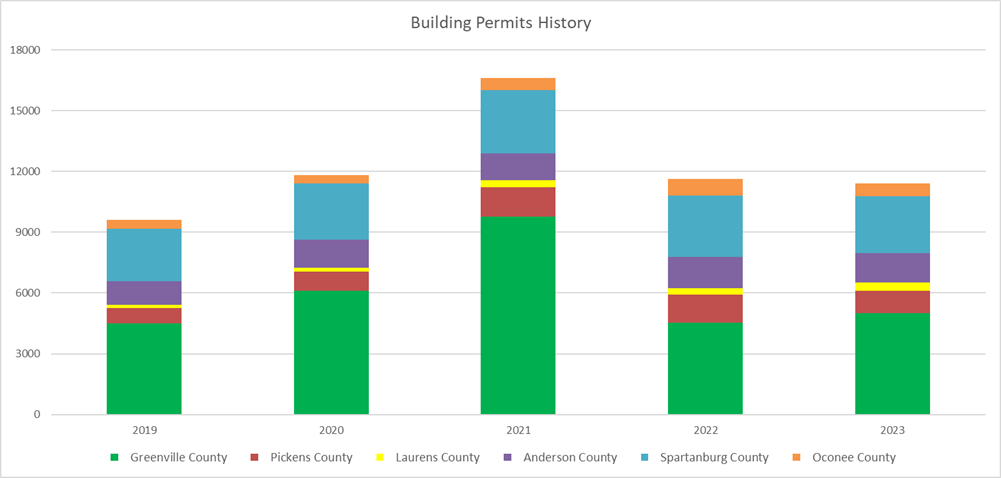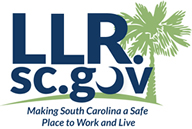Hello REALTORS®,
We often use building permit data to help advocate for Realtor interests with local government. It pays to keep accurate data. And it also can be a great resource for you.
I compiled the data from the US Census Bureau, which is reported to them by local governments. I think you will find my research useful. It is up to date through May 2024, but I estimated the first half of the year, by averaging to compare it to 2023.
Permits by County
I combined single-family and multi-family building permits because together they constitute housing units that can be occupied by families to meet their housing needs. However, only Greenville County has a meaningful number of multifamily housing permits. For 2023, there are two columns: the full year, and the first six months (2023YTD) so you can compare it to first six months of 2024.

Home building was flat in 2023, but has picked up again in 2024, up 19% so far this year.
Greenville County continues to be the powerhouse in the Upstate with 44% of the home building activity. Building permits increased by 30% in the first six months of the year.
The number two county is Spartanburg, with 25% of the permits. Home building in Spartanburg increased by 15% so far this year.
The rest of the Upstate splits the remaining 31% of home building activity. Anderson County is number three at 13%, but building permits have declined slightly since peaking in 2022.
Pickens County became number four in the Upstate with a surge in home building that started in 2021. But like the rest of the Western Upstate, home building has been relatively flat since then.
Oconee County also saw a surge of home building in 2021 and 2022, but it has settled in at 2021 levels since then.
It pays to look at older data. While the graphs don’t show earlier years, Pickens, Anderson and Oconee counties all had much higher housing production in the early to mid 2000s. Recent trends are like home building levels between 2003 and 2007.
The new hot county is Laurens County. It traditionally has produced about 150-200 homes per year. 400+ homes per year is a trend we should watch.
The graph below helps paint a picture of the last five years.

Next week, I will publish a report on the various cities and towns, and the unincorporated areas, broken out separately.
Support RPAC
Elections are an important way that your association represents you and helps make a strong market for real estate. Through RPAC, your association supports pro-business candidates who understand the importance of a vibrant economy for real estate. You can help by supporting RPAC. It’s easy. Your association includes a voluntary contribution to RPAC on your annual dues invoice. Pay it, and you are an RPAC supporter. If you haven’t supported RPAC this year, I encourage you to do so by clicking here.
Michael Dey, Director of Government Affairs



